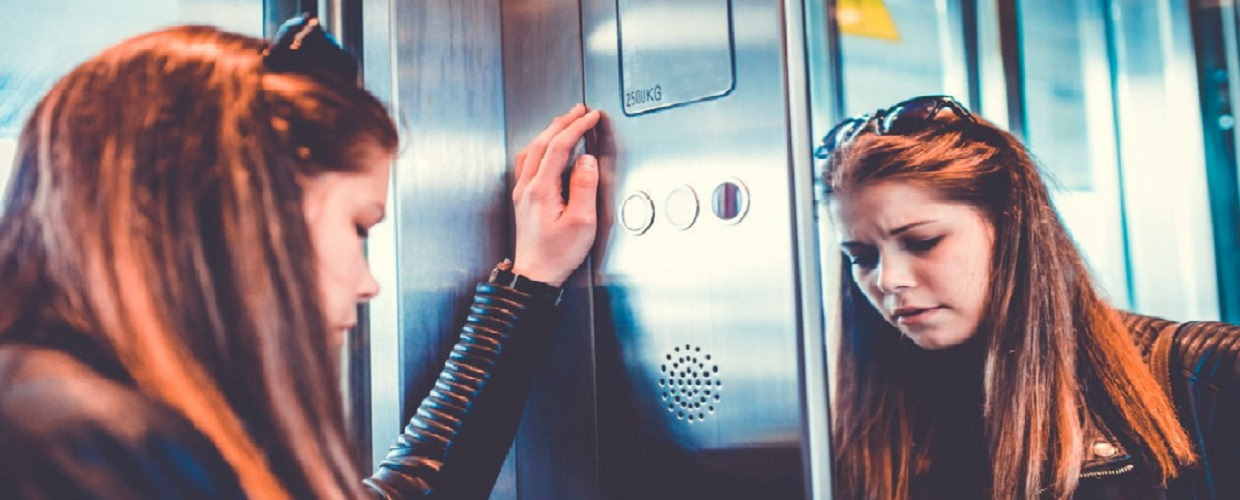As humans, we all have specific fears and phobias. One person might be terrified of spiders, and the person standing next to them might have a tarantula as a pet. Conversely, the spider lover might be terrified of heights, whilst the person with arachnophobia is an avid rock climber who thinks nothing of scaling a 1,000-foot cliff. The point we are making is that to each of us the dangers we face are equal, and it is only in the mind that our fear levels of any one of them are set.
That can also be applied to our fears of having an accident whilst in a commercial lift, and for many, the two greatest fears whilst in a lift are either being trapped in it or the lift plummeting to the ground.
If we take the latter of these, we have to point out that the chances of commercial lift falling down its lift shaft is minuscule. The modern commercial lift has sophisticated braking systems, multiple cables and often lift servicing which mean even if there were to be a serious fault, everything concerning the safety of the lift is to designed to prevent it from falling.
The instances of people being killed due to an elevator falling down many floors are remote and not as common as some action movies would have you believe. In percentage terms, the chances of being killed whilst using a lift is around 0.0000000958%, which means travelling in a lift is safer than travelling by car or aeroplane and your risk of death in a lift is less than the chance of being killed by a bolt of lightning.
Whilst there is no doubt commercial lifts are inherently safe, that does not mean that they are not infallible. By that we mean they can suffer faults, and the most common result of lift faults is that those travelling in it at the time are stuck there. This could be between floors, or at a floor but where the lift doors fail to open.
The first advice we will give if you are unfortunate enough to ever find yourself stuck in a lift is not to panic. Try to stay calm, and if possible, try to reassure those who are with you, especially if one of them seems excessively worried.
Most commercial lifts will have some means of raising the alarm either via a telephone or an alarm button so use that to raise the alarm. Many modern lifts are monitored and in addition to that, others in the building will soon realise there is a problem and alert someone.
The key point is that help will soon be on the way, so relax for now and try to be patient. Patience is crucial because the risk is that those trapped feel they have to try something to escape the lift, and this is where injuries or worse, fatalities, can occur.
One way this can happen is that the passengers try to force open the lift doors. This has huge risks to life and limb especially if the lift suddenly starts moving. Another strange reaction that some lift passengers have is to jump up and down in the misguided hope that this will somehow restart the lift. This puts unnecessary downward pressure on the braking system and lift cables, so please, no jumping up and down.
In summary, please be reassured that commercial lifts are safe. If you are in one and it stops unexpectedly, you should remain calm and use what means there is to contact the building management of the problem. Whilst you wait for help to arrive, do not do anything that could put you or your fellow passengers in harm’s way. Be patient, and know that you will soon be rescued. In future, you can tell others about the time you were trapped in a lift and survived to tell the tale.

